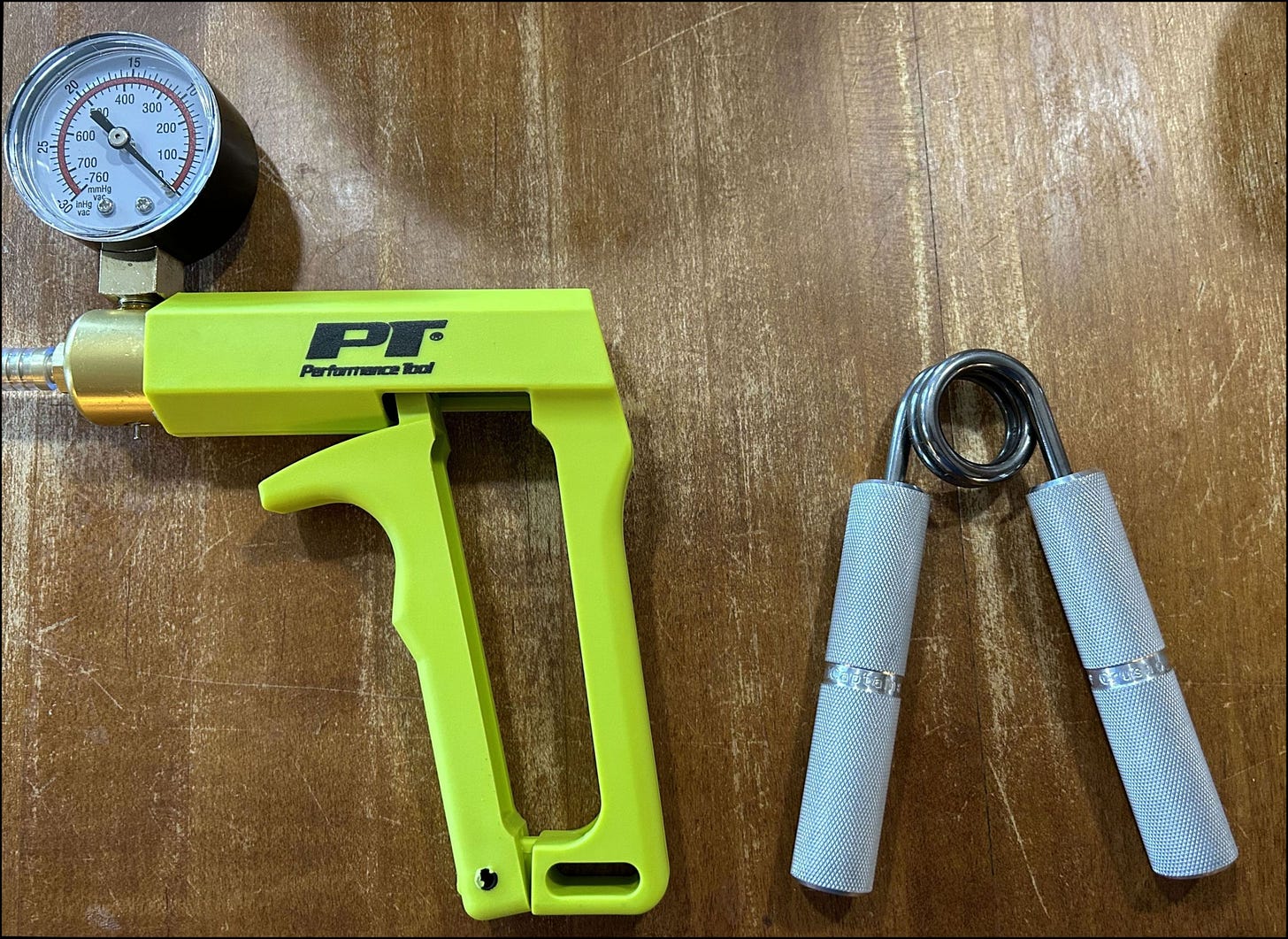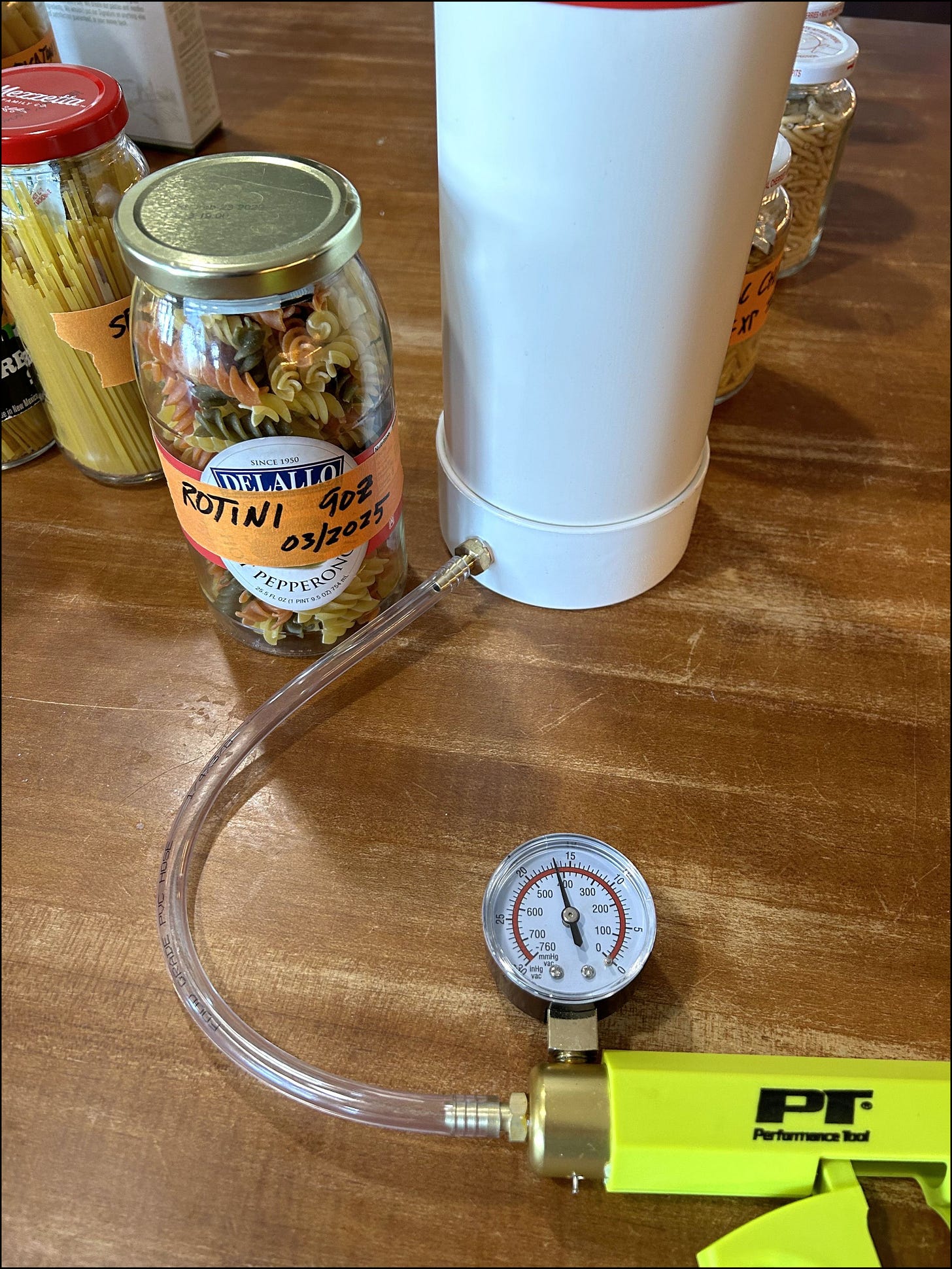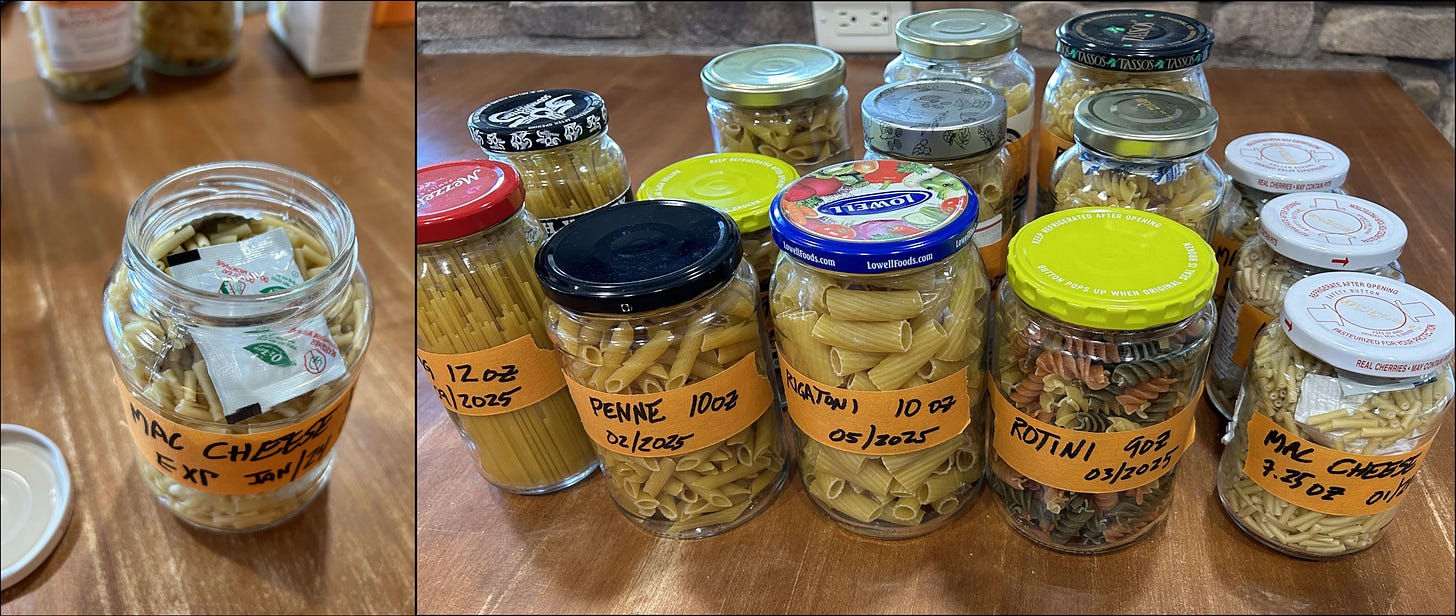Most of us have a Food Saver and some of us do pressure canning. But how about vacuum storage in jars? On another prep blog I read about this homebuilt device being sold on Etsy to help you reuse glass food jars to store things that don’t need to be frozen or stored in Mylar – dry things like coffee beans, pasta, rice and beans. So I ordered one to test.
Free Workout Included
The device from Mount Hickory is a perfect example of our community extending its experience in self resilience to others. This inventiveness is the backbone of American industry. The box arrived with the chamber, some vacuum line and instructions. I needed to add either an electric vacuum pump or a hand rig, so I chose a pump from the local auto parts store.
The above photo demonstrates the secondary function of the hand pump: its a grip strength exerciser as well! The testing I performed took three days and near the end I could nearly complete the required 120 squeezes with a single hand. And I could now start to shake hands like a cowboy. I did try the funky vacuum accessory on my Food Saver but it was weak sauce compared to what is required: 15 - 17 mmHg or a vacuum measured in millimeters of mercury. This sounds really pointy headed until you realize its a unit of measure you’ve been using for years, every time you refer to your blood pressure reading. (To a point, vacuum can be thought of as pressure from the other perspective.)
The procedure is simple: grab a used glass jar (you’re saving your old glass food jars, aren’t you?), fill with product, tighten the lid pretty well, toss it in the chamber, seal the chamber and then commence the workout. Or basically follow the instruction sheet.
The local supermarket had a liquidation sale that was something ludicrous like 15 boxes of pasta for $5 so I bought a ton to store. Tall thin jars were ideal for spaghetti snapped in half and big pickle jars were good for bulky stuff like rigatoni. You will quickly discover that glass food jars either have the domed snap tops like mason jars or they don’t. You want the former so you can tell if the vacuum sealing was successful. Of course you can also dig into your Mason jar stockpile (you have a stockpile, don’t you?) but that wasn’t the goal of this exercise.
n.b. With rice, beans and pasta you want to freeze the product for 72 hours to kill off any little beasties that may have hitched a ride from the mill.
Not all of the jars with domed lids worked. I could visually see the flaw in the seal of some lids but not in others. It’s kind of disappointing to open the chamber, press the top of the jar and hear/feel it snap indicating that it didn’t hold a vacuum. But I got used to it.
In the end I sealed around 24 jars of pasta (more than in the pretty photo above). I did include an oxygen absorber in each jar which, in retrospect, was probably unnecessary; if the product is sold in a cardboard box with a date code 2+ years in the future, its expected to be exposed to air in your pantry the entire time. If there is one thing I – much like many other bloggers – state repeatedly it is that dates on products are “best by” dates, not “it’s bad, don’t eat it” dates.
Conclusion
This is a handy device for extending the shelf life of dried food like the supplier’s instructions state. The real upside is that you can reuse jars from your food consumption and save the more expensive Food Saver vacuum bags and Mylar for wet stuff like meat that goes in the deep freeze. So if you’re putting up things you’ll eat it will pay for itself given time.
P.S. If you don’t get the lead-in reference, you probably didn’t watch the Hans and Franz skit in the early 1990s like I did. Fortunately the gist is that they were mocking that flaming Socialist Arnold Schwarzenegger even back then. Heh.






